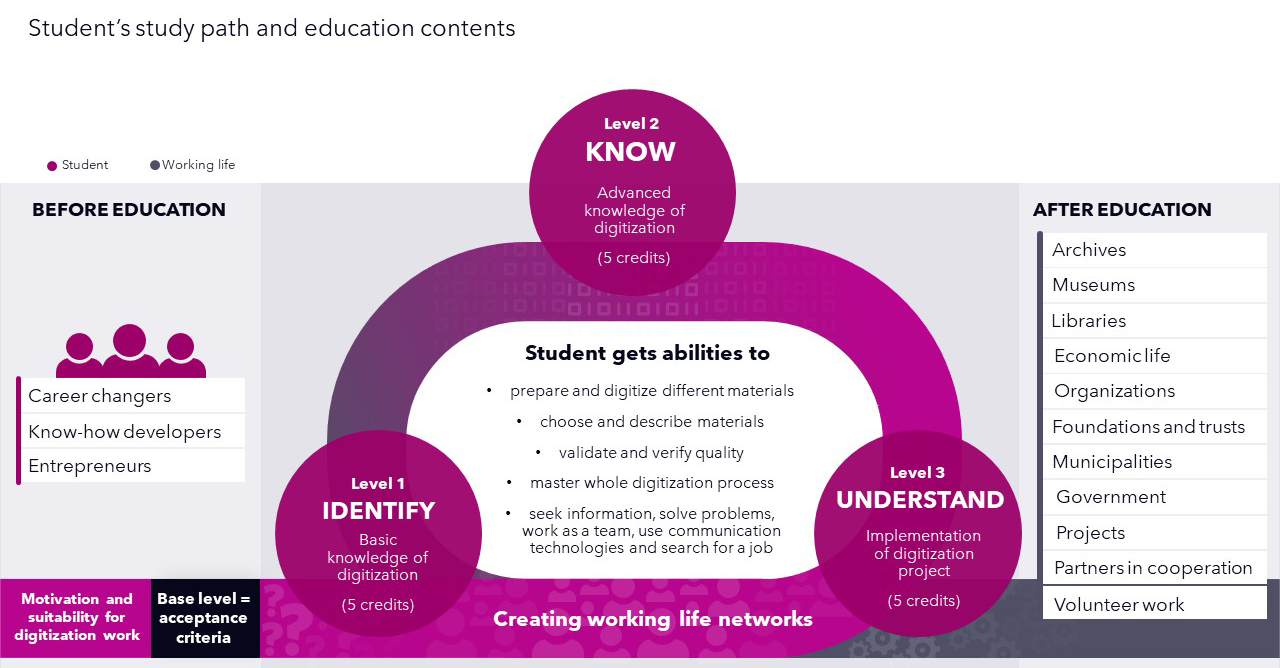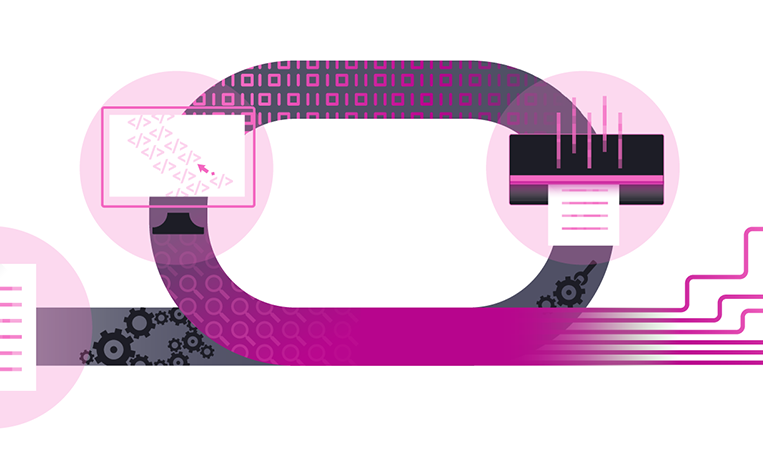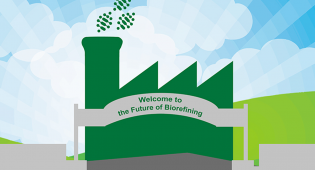Creating Digitization Education and a Training Model
14.12.2021There was a need for digitization education in Finland and particularly in Mikkeli, in South Savo. The primary reason for creating specialized digitization education were the mass digitization operations of the National Archives of Finland, which were placed this year in Mikkeli.
Memory Campus in Mikkeli region is an expertise and service centre which joins the knowledge of archives, libraries, and schools. South-Eastern Finland University of Applied Sciences and Mikkeli Development Miksei Ltd. created a digitization education plan and training model in cooperation primarily with the National Archives of Finland, the National Library of Finland and Central Archives for Finnish Business Records.
The main aim was to provide competent and skilled employees and to implement the previously designed digitization training for digitization employees and digitization experts for the growing local and national needs, both now and in the future.
The Digitization Competence Demands
The competence demands of the digitizing have developed rapidly. For example, the scanning technology, automatic description, and the digital quality assurance have improved by leaps and bounds. Further, the utilization of artificial intelligence has started to become part of everyday practices in digitization. Especially the National Archives of Finland have taken mass digitization to another level.
In the study by O’Harrow et al. (2020, 3), they state that the more general the digitizing education is the easier it is to apply. On the other hand, the need for a specific ability is always dependent on the environment, situation and the different variables of a project or responsibilities. The studies also show that the learning is effective when theory is connected to practice. Knowledge accumulates with practical work, and in the specific tasks where decisions are made. Sometimes failing at something is the best way to learn. (O’Harrow 2020, 3.)
The Model of Digitization Education
The pilot digitization education for digitization employees was described and modelled for the possible future needs. The models demonstrate the education for the digitization employees and employers. Three schemes were made, these are the cooperation model, the education structure and the study path and the education contents. The education models were developed together with the experts from working life.

The cooperation model displays the close connection to working life. It emphasizes the promise that teacher and student make to each other and to themselves. It shows the role of cooperation and feedback. During the education, the student will grow professionally and hopefully this will lead to employment in the future. Working life experts participated in the education too, by offering training positions and specialist lectures. The aim was to get students with digitization competencies employed.
The study path demonstrates the abilities the student should have when finishing the training. People have different backgrounds, but the most important thing is the student’s motivation. The aim is that students could network with working life professionals during education which would help improve their employment prospects, rather than solely learn digitization competencies. The study path model also demonstrates the different workplaces that there are to choose from.
Results
As a result, 30 new people with digitization skills were trained. Some students have already been employed. In addition, the project has produced several different learning materials. The materials will be shared in Library of Open Educational Resources (https://aoe.fi) and licensed with the CC BY SA -license which makes it possible for others to utilize them. The project results serve as a good example of organizing digitization training. Altogether, this project benefits the whole of the Mikkeli area, as well as national and even international organizations.
Sources
O’ Hara, G., Lapworth, E & Lampert, C. 2020. Cultivating Digitization Competencies: A Case Study in Leveraging Grants as Learning Opportunities in Libraries and Archives. Information technology and libraries 4, 39. Online magazine. Available: doi:10.6017/ital.v39i4.11859 [viewed 25.10.2021.]
The Professional Digitizer Education project was financed by the Centre for Economic Development, Transport, and the Environment from the European Social Fund (ESF). The administrator was South-Eastern Finland University of Applied Sciences and partial implementer was Mikkeli Development Miksei Ltd.
To read more about the project and education, please visit: https://www.xamk.fi/en/research-and-development/professional-digitizer-education/




































